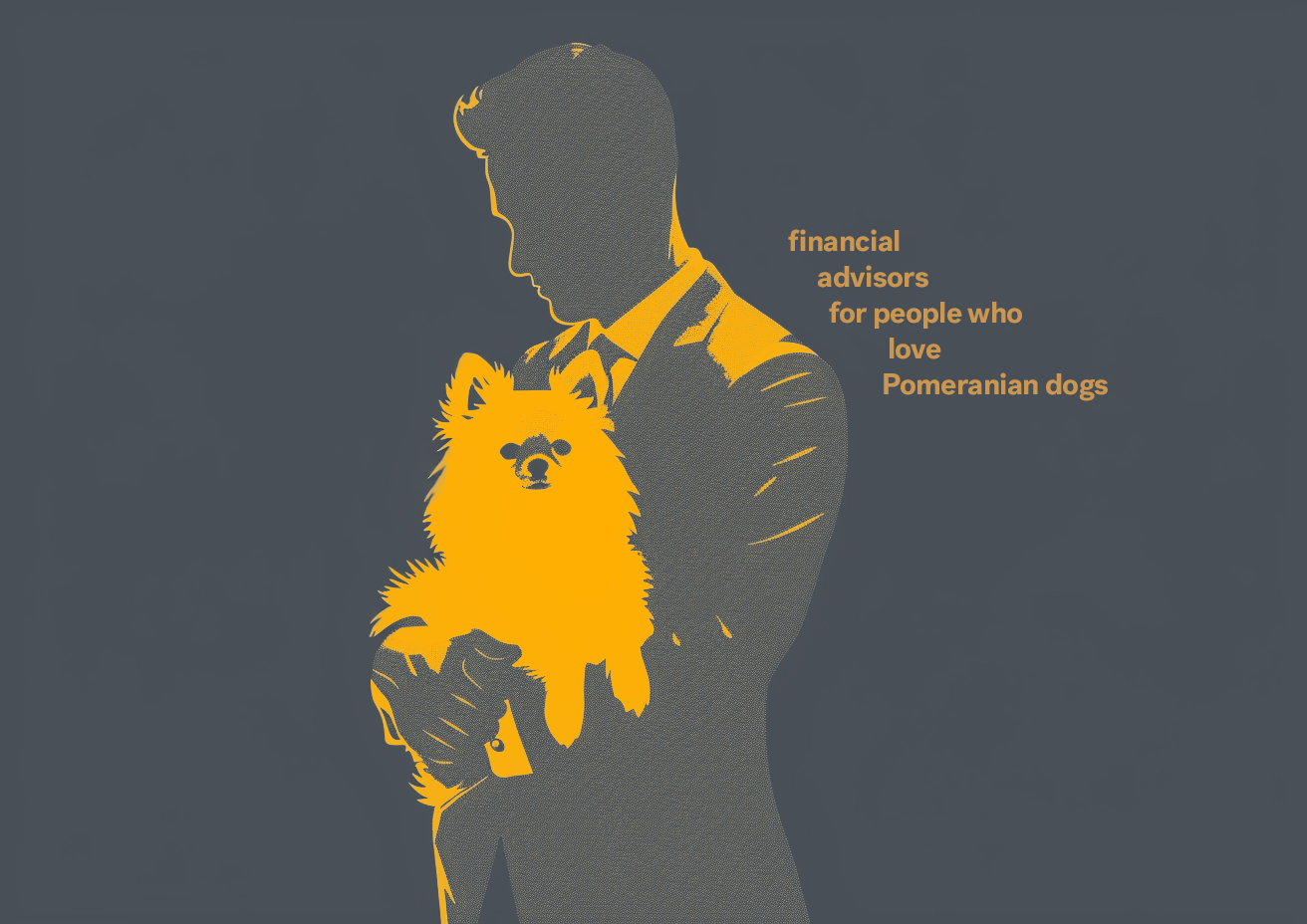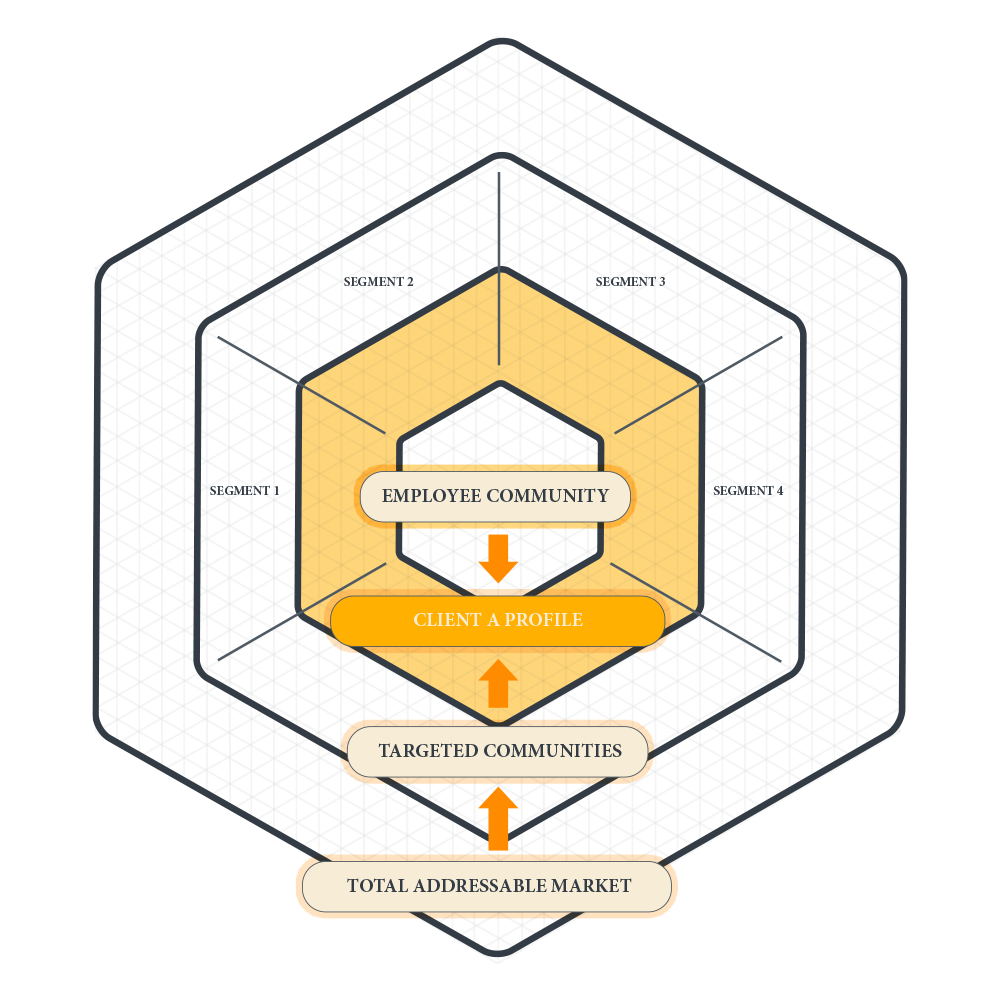
When I was first selling—life insurance and mutual funds—we were instructed to break down our client list into three groups:
A Clients: Do what you say, don't ask questions, have money to spend, give referrals
B Clients: Do what you say, have less money, probably don't give referrals
C Clients: Most of your clients
Sell more. get referrals. Don't waste time helping people who can't buy more from you. That was the basic gist.
As weak (and unactionable) as that advice was, it planted a seed that is now the 60-foot high red oak providing shade for so many: The essential work of segmentation. Let's dig in.
Finding a client today
Finding a client today is harder than it has ever been. Marketing as a discipline is gutted, and the retail business development techniques of the past are a long lost memory. Let's take a look at the usual suspects:
- Tradeshows and Events: High cost, high competition, low differentiation. You can spend a lot of money kissing babies and buying the attendee list, all while generating no real relationship with the audience.
- SEO: Google has swapped its front page from links that play by its algorithm rules to AI-generated drivel that often points to some of the lowest-quality content on the internet.
- Webinars: In the salad days of COVID (sarcasm) you could spin up a webinar, drop the link on LinkedIn and expect a healthy showing. The late 2010s were a panacaea of "Masterclass" content (sales webinars posing as training events) and always-on webinars with fake countdowns to make you a manufactured sense of urgency. Today, if your webinar isn't differentiated, value-forward, and marketed carefully, its a tree falling in a forest with no sound.
- Digital leadgen: Circa 2018, we were all led to believe that the magic of digital marketing with its ability to chase people around the internet, bait them into giving their email addresses into lead forms, and then spamming them with emails and sales calls was going to turn "leads" into "clients." It worked for a hot minute that has now since passed.
- Social media: I was among the "LinkedIn solves everything" crew in the early-mid 2010s. And for a brief period, for those of us who were among the few posting content in a world full of lurkers, it worked. Today, there isn't a social media platform well built for organic (not paid) reach, and paid reach through ads is dependent on a clearly defined segment and more expensive than ever.
- Peer referrals: Network referrals (CPAs to attorneys, attorneys to financial advisors, etc.) are more competitive than ever because consultative businesses are ALL facing the above. So everyone is much more focused on what they can get than what they can give, and long-standing referral partnerships are fraying across the board. Revenue opportunities are falling.
Why you need segmentation more than ever
What used to be called "niche marketing" is now table stakes. Every organization that grows through trusting long-term relationships (advisory, education, non-profit, consulting) has to demonstrate deep knowledge and impact directly in the unique problem set its clients face.
No one has generic problems.
Problems are specific. They are contextual. They are personal. Colleges are closing every day not because of demographics or the student loan crisis or a change in the political winds. They are closing because they didn't know their student. Or, more often, no one knew they knew their student.
Mass consolidation in banking, wealth, and legal services, sequeezing out the middle market is again the obvious endgame of a long-term trend to not differentiate, not communicate to clear client set, to steer clear of segmentation and positioning.
Naysayers may say, "Great! We're too big to be the financial advisor for people who love Pomeranians. We've got a broader client set than that. Niche marketing won't work for us."
You're both right and wrong.
You can't and shouldn't narrow your business down to a single demo. But demographics are a secondary layer in segmentation, not a primary one. Let me explain.

Client A, where segmentation begins
Every time I go into a consulting-based venture, they all say the same thing.
"Our clients are really special."
"Our differentiator is that we're comprehensive and client-centric."
"No one does what we do."
They are a bit taken aback when I say what I always say: "Everyone in your industry thinks their clients are special. Everyone from annuity salesmen to niche asset managers thinks their clients are special. And nobody wakes up and gives their life to running a business thinking, 'What we do, anybody could do.' So let's get real."
And then the real conversation begins.
The truth is their organization, like yours, is built to work for only a very narrow subset of people. Your onboarding process, client service model, your collection of services, your team culture. All of them are baked full of biases. Intentional and unintentional tilts to your business that make it a pain in the ass for people who don't fit and a dream for people who do.
The least effective way of defining that set of people is their demographic: where they live, how much money they have, their gender, their work status... the kinds of things old, tired, Facebook-based marketing will tell you to focus on. Those things are easier to enter into a CRM, but they make really shitty tools for building a target client (Client A).
Growth ventures must first shift from demographic customer profiles to "communities.” People exist in networks of relationships, and recent research shows that over 60% of buying decisions happen within those networks. To own your market, you have to get laser-focused on that community first, a community we call Client A.
Client A has a few unique markers:
- Shared Vision: They want a similar future. (produces gut-level alignment with your organization)
- Shared Values: They are guided by similar priorities. (more likely to produce happy customers)
- Common Felt Needs: They are responsive to similar wants (ensures service simplicity and efficiency)
- Common Problem Set: They face consistent challenges (manages scope of work and cost of service delivery)
- Shared Self-Concept: They see themselves similarly (simplifies positioning and messaging)
- Team Alignment: Your employees thrive serving them (manages staffing design)
A strongly defined Client A will always feel smaller than you want. But focus is not a synonym for exclusion. Instead, it maximizes the 80/20 rule so that your clarity around the 20% draws the other 80% most like them (and empowers a laser-focused business model).

And Now... Segmentation.
On the path to enterprise scale ($100M+), the narrow focus of Client A requires further segmentation. Here, a nuance is essential. Lagging companies will make the mistake of creating multiple target client profiles and trying to address all of them differently, bogging their marketing, growth, and service teams in complex parallel systems that create overhead, not results. The growth path comes, again, from the 80/20 rule.
Segments should share the 80% commonality with Client A and contain 20% custom needs/wants specific to their segment. This allows the business to streamline its operation and avoid drift. It also, most importantly, allows it to own a custom position in the marketing. The 20% difference is the foundation for buying personas that drive your marketing strategy.
Sample Client A for XYZ Capital.
Our best client:
- Wants autonomy and to feel affirmed in the financial security their career choices have created.
- Values deep relationships, direct, unvarnished advice, and easy access to information and support.
- Is irritated by complexity, unresponsiveness, and having to deal with multiple people to solve one small problem.
- Has succeeded professionally by being educated and thinking ahead. They need to work with people who know what they are talking about, know how to bring in specialists when needed, and can integrate head-and-heart decisions without oversimplifying the complex.
- Sees themselves as smart, driven, a "good client," and a role model for others
- Loves our team because of the high-touch service, the lower turnover of their support, and the quick access to highly specific knowledge when they want it.
This Client A profile shows layers of nuance but also the necessary specificity to build a business model. Your Client A profile must be specific enough to drive hiring, budgeting, training, and service design decisions. If it's not, keep editing.
The above profile can then be driven into segments.
XYZ Capital proudly services Client As in the following segments:
- Successful business owners within 10 years of a founder's exit strategy
- Airline executives with complex compensation packages
- LGBTQIA+ couples with accumulated wealth and a vision for legacy
- Philanthropically minded divorcees
These segments allow you to build full client lifecycle CX (client experience) that cares for their unique needs from Stranger to Advocate. Because you've started with Client A, your general service model covers 80% of those needs. Your 20% specificity allows for targeted growth efforts that produce referrals, lead flows, and onboarding experiences that are value-forward, custom, and distinct for your growing segments.
Your next move
There is no growth plan for consultative ventures without properly built segmentation. You can't create content that matters. You can't show differentiated value to new prospects. You can't provide legendary service.
And, in all likelihood, you're on the path to obscurity.
Our system of building Client A first, then segmentation, then service design, then growth strategy empowers you to move out of the dying tactics of past decade and to lead in your industry over the next 10 years. You can't just profile a target client, you've got to build a segmented consultative community.
Are you tired of the six-month discovery process agencies put you through before they give you advice or deliverables?
Get our free 5-question analysis of your client growth strategy today.
Stay brains on, heart open, forward progress.
